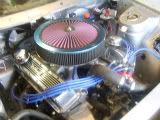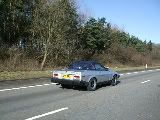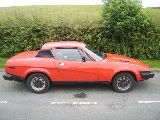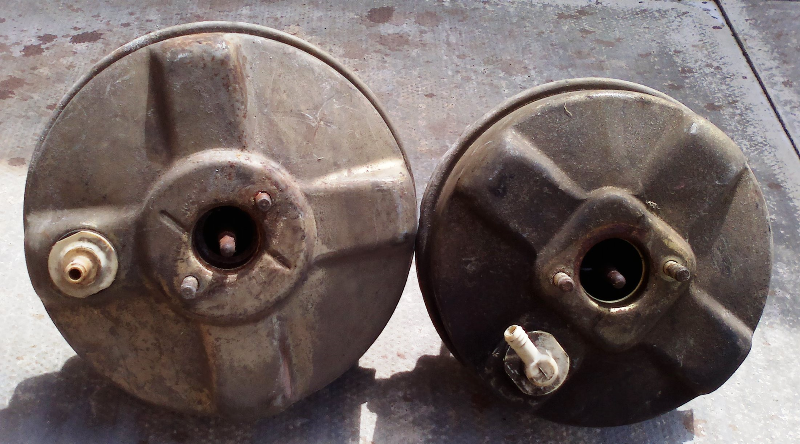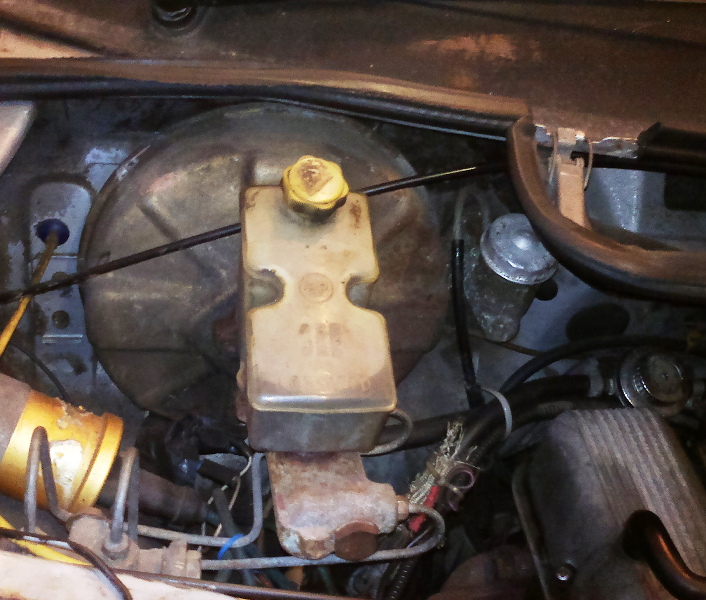Postby Graham.Fountain » 01 Jun 2014 15:38
I know this is something of a personal <i>bête-noire</i>, but with any modifications to the brakes, you really have to consider the effect on the bias of the brake balance: It's important to outline what you're doing to bring the balance back to the front, or limit how much it has moved to the back, and why, just as much as what you're doing to improve the overall effect. Otherwise you give the unititiated who might read this the impression that it's perfectly safe to change the brakes as you like, and the impression that the only possible effect is that you stop sooner (or later). Whereas, the fact is, which way round you're facing when you do stop has some significance for safety. Obviously, this isn't such an issue with a car for track use, but you don't make it clear what the use is either.
As to why you have to do anything: If you bias the balance of the brakes too much to the rear, you risk locking the back brakes first, which should normally be avoided as it make the car unstable and liable to spin. And, the odd thing is that the bias on the brake balance is not given simply by the ratio between the efforts at the front and back. Hence, the effect on bias of improving the effort from the back brakes is not counteracted by an equal improvement at the front. Nor does improving the fronts mean that you can improve the back equally, and keep the bias where it was (should be). In fact (and this apparently comes as a surprise to far too many) improving the brake effort at the front can make the situation worse, i.e. move the brake balance more to the back rather than bringing it towards the front. All this is made more of a problem when you also improve the coefficient of friction between the road and tires, e.g. by using a wider tire and or softer compound.
For those (very few) interested, the physics is that the brake force or effort you can apply to a wheel before it locks depends entirely on the fraction of the cars weight on that wheel and the coefficient of friction between the tire and the road (which is determined by how clean and dry they are and the compound of the rubber). Why all that's so is given by Amontons' and Coulombs' laws of friction.
However, when decelerating under braking, more of the weight of the car is transferred to the front, and there's less weight on the back. And that weight transfer depends on the total brake force from all four wheels, not how much is applied where: The point where the resolved force through the centre of gravity of the car hits the surface of the road moves forward under braking. This resolved force has a vertical component from the weight of the car (<i>M*g</i>) and a horizontal component from the force of braking (<i>M*a</i>). And the weight on each wheel depends on how far it is from this point where the force hits the road.
As an aside, this is why the front dives under braking, and the rear lifts. And why this dive is in proportion to the total brake force, not how much is done at the back or the front (there is a small effect due to the trailing links at the back tending to want to be more nearly horizontal under tension due to the rear effort; but this is at best a secondary effect compared to the effect of the weight transfer under braking acting directly on the springs; and certainly does not change how much the front dives, only a small change to how much the rear rises by - in effect, stiffening the rear springs slightly).
So, anything you do to improve the braking force, whether it's at the front or the back, increases the force needed to lock the front wheels and reduces the force needed to lock the back brakes. Which set do lock first does depend on actual forces and the coefficient of friction between the tires and the road, and is thus more of a problem with softer tires and dryer, cleaner road surface. However, if you improve both equally, you still moved the bias backwards and increased the risks of rears locking first. Similarly, if you improve the fronts alone by enough, you will reduce the force needed to lock the backs to less than they deliver, and thus make the car rear biased. This is one of the reasons why the TriumphTune performance manual (MGL 9800) says, when improving the fronts (I would guess, beyond the TR8 setup), "use the smaller rear wheel cylinders [from the 4 speed car] to balance the braking and standard rear linings for a road car." If you improve the back brakes, then it's fairly obvious you're moving the balance towards the rear; doubly so, since you've reduced the force needed to lock the rear wheels and increased the force available to do that.
It is possible to work all this out, and see how much closer you are to rear biased brakes – I have an excel spreadsheet that does this somewhere. Unfortunately, you need the before and after weight of the car and the (before and after) position of its CofG – fore and aft and height above the road – to get actual numbers. And while I know how to measure these, I don't have the equipment: a set (pref., 2 sets) of 500+ Kg scales (and a jack, which I do have). I understand you can get the actual brake forces from an MOT test station – though that may be limited by the coefficient of friction between the tire and the roller, so there could be complications there. It is relatively easy to calculate the forces for disks from their dimensions and the hydraulic pressure, but it's a bit hard for drums.
TR7 Sprint VVC 697S (some of)
TR7 DHC Sprint A TR7 16V (fake, rusty):
B&Y '73 Doly Sprint (kids!)


